No products in the basket.
T-Shirt Guide
How to Remove Vinyl from a Shirt: Step-by-Step Guide
I recently found myself in a bind when my favorite shirt, customized with a vinyl design, needed a makeover. The design had started to peel and crack, making the shirt look worn out. I didn’t want to toss the shirt—it was still in great condition—so I started searching for ways to salvage it by learning how to remove vinyl from a shirt. This turned out to be a bigger challenge than I expected. Luckily, with a bit of research and experimentation, I found some effective techniques that can save your shirt without ruining it. Whether you’re dealing with an old, peeling design or just want to make space for something new, here’s everything you need to know to safely remove vinyl from a shirt.
Understanding Vinyl On Clothing
When I initially started working with vinyl on shirts, I discovered really fast how flexible and robust it could be. Particularly for items like t-shirts, hoodies, and sportswear, vinyl is among the most often used materials for designing bespoke patterns on apparel. Like anything, though, there are occasions when you might have to remove it depending on wear and tear or personal inclination. Here’s what I found regarding vinyl and the reasons behind possible necessity for removal.
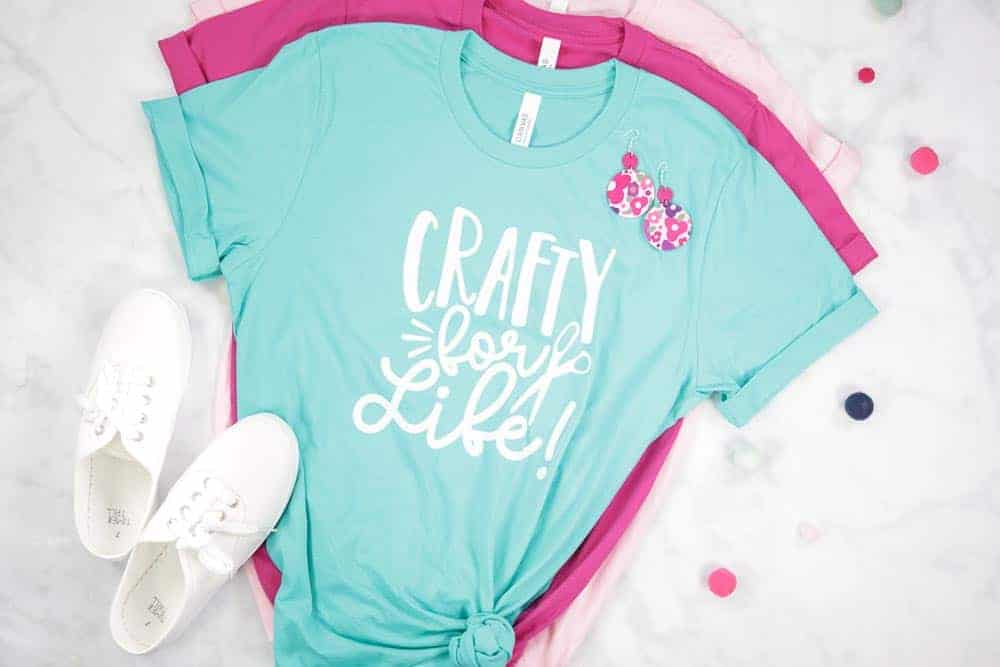
What Is Vinyl
Heat Transfer Vinyl (HTV) is the common moniker for vinyl used in shirts. Custom clothing often uses this kind of vinyl since it is meant especially to bond with fabric by heat and pressure. Applied properly, vinyl produces a strong and seamless design that resists fading or peeling over many washes.
Common uses for vinyl are logos, names, and creative designs; it can be matte, glossy, or glitter. But things change with time, hence sometimes the necessity to take vinyl off a shirt results from things not going as expected.
Why You Might Want To Cut Vinyl
I discovered I needed to take vinyl off of my shirt for a number of reasons, and you might find yourself in such circumstances.
- Pitting or cracking: Vinyl starts peeling or cracking after several washings or due to inadequate application, which is one of the most often occurring reasons it needs to be removed. When this occurs, the design looks worn out and ugly, and nobody wants to keep sporting a damaged shirt.
- Outdated Designs: A shirt’s design may seem simply antiquated at times. Perhaps I made a personalized shirt for a past occasion, or my own style has evolved and I wish to delete the design to give the shirt a modern new look.
- Application Mistakes: When I first started working with HTV, I made a few mistakes during application. Either the vinyl wasn’t placed correctly, or I didn’t use enough pressure, leading to uneven bonding. Instead of throwing out the entire shirt, I needed to figure out how to remove the vinyl so I could fix the error and reapply the design properly.
How I Removed Vinyl From My Shirt
Using Heat To Loosen The Vinyl
Method 1: Iron
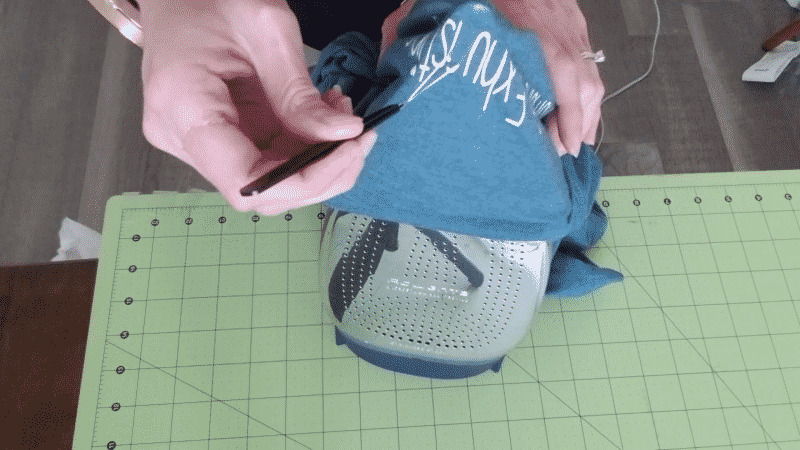
I first reached for a standard household iron and set it on medium heat, without steam. To guard the fabric, I covered the vinyl with a piece of parchment paper; then, one at a time, gently press the iron over the image for ten to fifteen seconds. The adhesive binding the vinyl to the shirt softens in part by this warmth. I gingerly peeled the vinyl off with tweezers while it was still heated after I saw it beginning to lift at the margins.
Method 2: Heat Press
I also experimented with a heat press for a more equal heat application, which performed nicely—especially for bigger designs. I pressed the vinyl area for roughly ten seconds after setting the heat press to about 300°F (150°C). Because the heat press made the glue more flexible, I could gently, steadily remove the vinyl off. Though both techniques proved successful, it worked somewhat faster than the iron.
Breaking Down Adhesive With Chemical Solutions
Method 1: Rubbing Alcohol
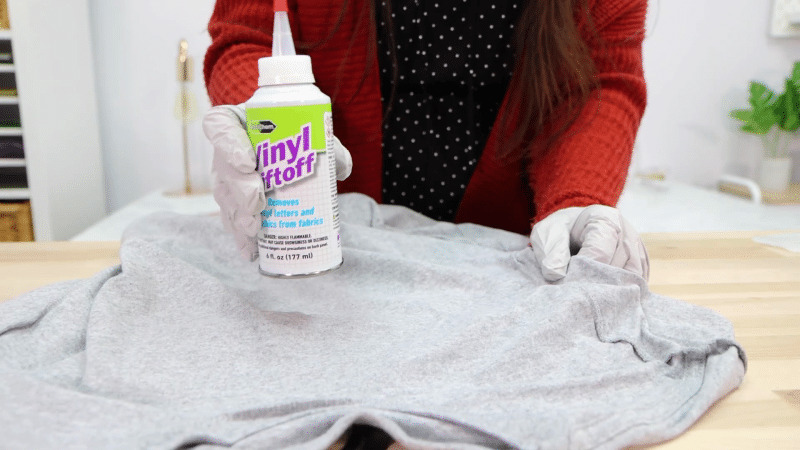
Should heat fail, I broke down the glue with rubbing alcohol—isopropyl alcohol. I let it soak in for a few minutes after directly applying it to the vinyl area with a cotton ball. The alcohol weakens the vinyl’s and fabric’s bond, which facilitates peeling away. After the adhesive came off, I carefully scraped the vinyl using a plastic scraper or fingernails.
Method 2: Commercial Vinyl Remover
I also came upon a professional vinyl remover made especially to dissolve glue without ruining cloth. Applying the liquid to the vinyl and allowing it to settle for the advised period, I followed the directions on the bottle This produced bigger portions of vinyl peel off and worked much faster than rubbing alcohol.
Pulling Off The Vinyl
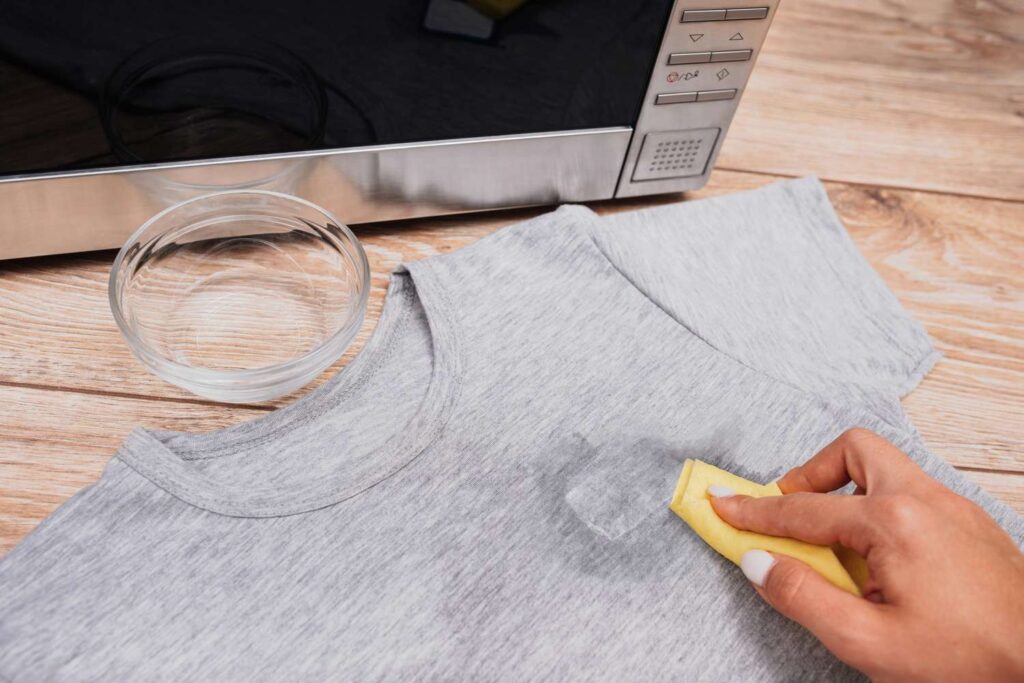
The vinyl was soft and malleable following heat or a chemical treatment. I gently removed a vinyl corner off the cloth using tweezers or my fingertips. Going gently helps you to prevent ripping the vinyl into smaller bits, so facilitating removal of it. I just reapply heat or additional rubbing alcohol if any areas still resisted until the vinyl lifted away neatly.
I was able to totally remove the vinyl without ruining my shirt using these slow motions and patience!
Removing Heat Transfer Vinyl From A Shirt: Methodology
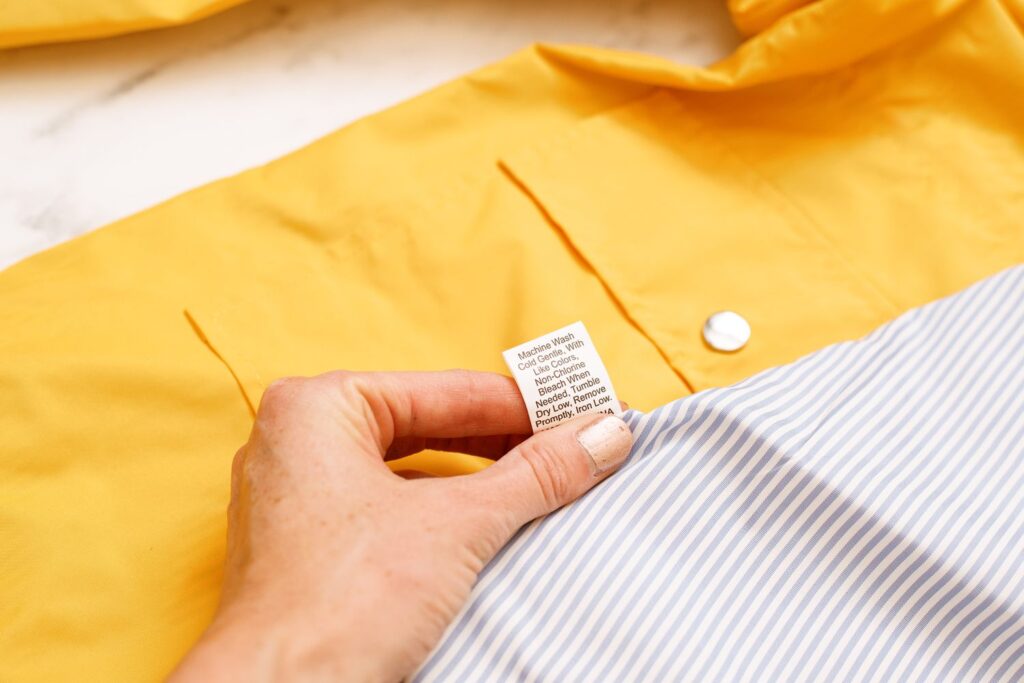
I discovered a few good techniques that worked without destroying the fabric when I had to cut heat transfer vinyl (HTV) from one of my shirts. I experimented with heat first. I laid a piece of parchment paper over the vinyl and took an iron on medium heat. Pressing the iron on the region for roughly ten to fifteen seconds softened the glue. I then gently poved the vinyl off with tweezers.
Common Mistakes And How I Avoided Them
When I was removing vinyl from my shirt, I had to be careful not to make some common mistakes that could ruin the fabric. Here’s how I avoided them.
Overheating The Fabric
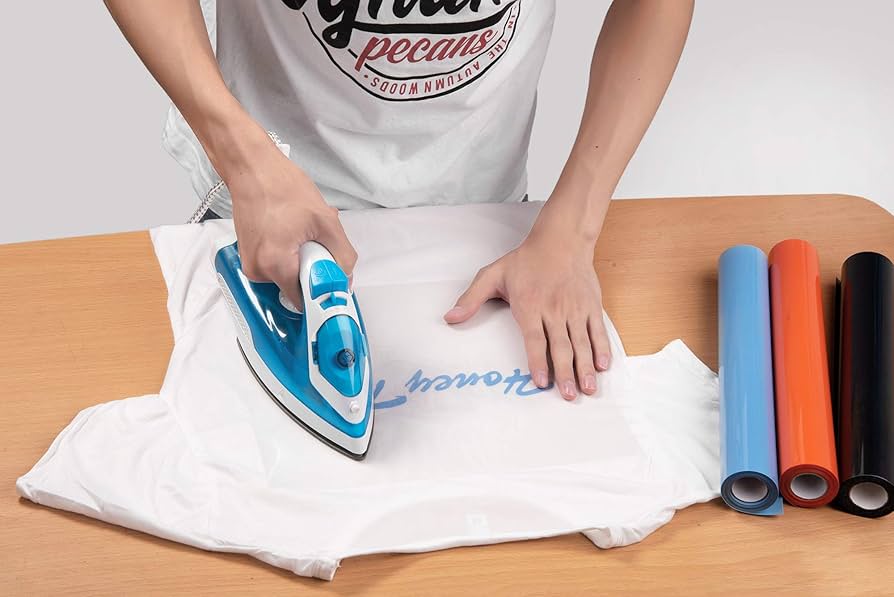
One big risk with using heat is overheating the fabric, which can cause burns or scorch marks. To avoid this, I made sure to use medium heat on my iron and didn’t leave it on one spot for too long. I also placed a piece of parchment paper or a cloth between the iron and the shirt to add a layer of protection. This allowed me to safely heat the vinyl without damaging the material.
Using Too Much Chemical Solution
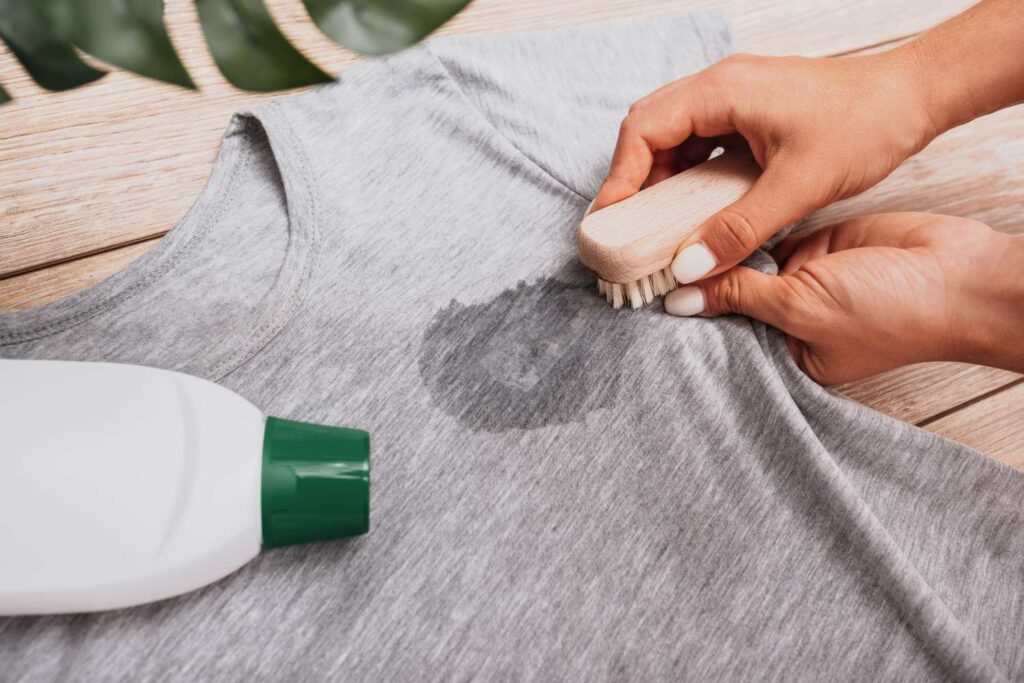
When using rubbing alcohol or a vinyl remover, it’s easy to go overboard. I learned that applying too much solution can weaken the fabric or cause staining. To avoid this, I used small amounts at a time, applying it just to the vinyl area with a cotton ball. I let it soak in for a few minutes, and if the vinyl didn’t lift easily, I repeated the process rather than soaking the shirt all at once. This kept the material intact while still getting the job done.
FAQs About How To Remove Vinyl From A Shirt
Can I Remove Vinyl From Any Type Of Fabric?
Yes, but the method you choose depends on the fabric. Cotton and polyester generally handle heat and chemical solutions well, but delicate fabrics like silk or wool may be more prone to damage. I recommend testing any method on a small, hidden area first to ensure the fabric won’t be harmed.
Will Rubbing Alcohol Damage The Shirt?
In my experience, rubbing alcohol is safe for most fabrics, but it’s essential to use it sparingly. I applied it directly to the vinyl and avoided soaking the entire shirt. If you’re worried, try a patch test on a less visible part of the shirt first to ensure it doesn’t cause discoloration or weakening.
What If The Vinyl Doesn’t Peel Off Easily?
If the vinyl is stubborn, I found it helps to alternate between heat and a chemical solution like rubbing alcohol. Applying heat to loosen the adhesive, followed by a little rubbing alcohol, usually made the vinyl easier to peel away. Patience is key—sometimes it takes a couple of rounds of heating or applying solution to get the vinyl off completely.
Conclusion
Although first it seems difficult, removing vinyl off a garment is quite possible with the correct methods. From what I know, a fantastic approach to loosen the vinyl without damaging the cloth is running heat—from an iron or heat press. Rubbing alcohol or a commercial vinyl remover can be rather successful in dissolving the glue when heat alone fails. The secret is to slow down and handle the tools or fixes you are using carefully so as to avoid damaging the shirt. I have been able to rescue some of my best shirts using these techniques; I’m sure you could too!
For a visual guide, you can check out this video I found helpful:

I am Estelle Krattinger, a multi-talented creative artist from Paris, France. Known for my captivating photography and enchanting storytelling, I have garnered a dedicated following on Instagram, where I share glimpses of my artistic journey and creative pursuits. With an impeccable eye for detail and a passion for exploring the beauty in the mundane, my work showcases my unique perspective and artistic vision.
